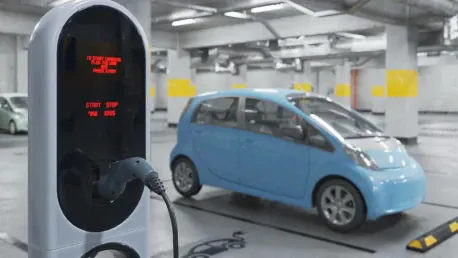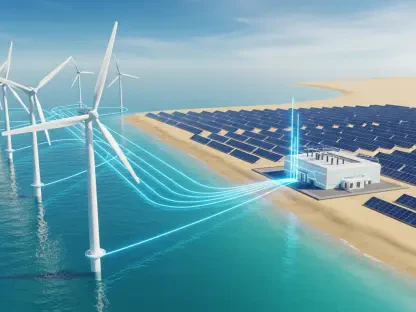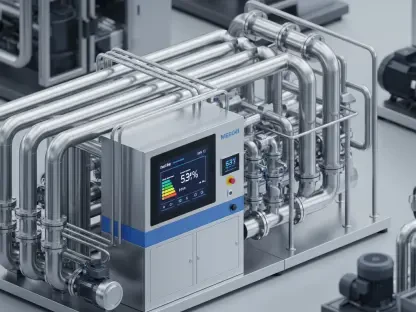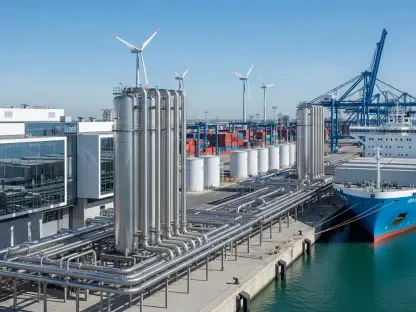LG Energy Solution (LG ES) has reported a significant decline in its financial performance for the fourth quarter of 2024. The company, which specializes in electric vehicle (EV) and energy storage system (ESS) segments, is navigating through market volatilities with strategic initiatives aimed at stabilizing its operations and enhancing competitiveness.
Financial Performance Overview
Q4 2024 Financial Results
In the fourth quarter of 2024, LG ES reported consolidated revenue of KRW 6.45 trillion (approximately US$4.45 billion), marking a 19.4% decline from KRW 8 trillion in Q4 2023. The operating profit for Q4 2024 was recorded as a loss of KRW 226 billion, a significant drop from a profit of KRW 338 billion in the same period the previous year. This represents a 167% decline in operating profit, highlighting the substantial financial challenges the company faced during the quarter. Various factors contributed to this decline, with market volatility playing a crucial role.
The decrease in revenue and operating profit is indicative of the difficulties encountered in the EV and ESS markets, both domestically and internationally. Reductions in average sale prices (ASP) due to lower metal prices, coupled with a slowdown in European demand for EVs, contributed significantly to the negative financial outcomes. Despite this challenging landscape, LG ES is focusing on strategic realignments to mitigate these impacts and drive future growth. The company is actively seeking ways to enhance its profitability and maintain a stable market position.
Annual Financial Performance
For the full year of 2024, LG ES posted consolidated revenue of KRW 25.6 trillion (US$17.7 billion), marking a significant drop of 24% from KRW 33.7 trillion in 2023. The decline in annual operating profit was even steeper, falling by 74% from KRW 2,163 billion in 2023 to KRW 575.4 billion in 2024. These figures underscore the broad financial challenges faced by the company across all quarters of the year. However, it is worth noting that despite these declines, LG ES managed to record a positive operating profit margin of 2.2% for the year.
This positive margin was primarily attributable to tax credits from the Inflation Reduction Act (IRA) in the US. Without these tax credits, the company’s operating profit margin would have been -3.5% for the full year. This indicates a heavy reliance on external financial aids to sustain profitability. LG ES is thus actively pursuing various strategic initiatives to stabilize its financial performance and lessen its dependence on such credits. The company’s continued focus on cost-effective material usage and yield improvement through manufacturing process optimization is expected to play a critical role in achieving these goals.
Market Conditions and Challenges
European Market Slowdown
The decline in LG ES’s revenue for 2024 was partly attributed to a slowdown in the European EV market. This particular market segment faced multiple challenges, including decreased demand for electric vehicles and falling metal prices, which subsequently affected the average sale price (ASP) of LG ES’s products. The European market’s sluggish performance played a substantial role in the company’s overall financial decline, posing tough challenges for LG ES in maintaining its revenue stream in the region. Companies operating in the European EV space faced heightened competition as well, exacerbating the challenges experienced by LG ES.
To combat the decline in the European market, LG ES is reassessing its strategies and adapting to the region’s dynamic market conditions. By focusing on innovation and leveraging strategic partnerships, the company aims to rekindle demand for its EV products. Adjustments in pricing strategies and improvements in product quality are also part of LG ES’s efforts to regain foothold and stimulate growth in the European market. Despite the hurdles, LG ES remains committed to enhancing its presence and performance in Europe through innovative approaches and market adaptations.
North American Market Growth
Conversely, in North America, LG ES experienced a growth in sales volume by more than 70% year-on-year. The company attributed this robust growth to the ‘first-mover advantages’ it secured by establishing manufacturing facilities in the US. Such strategic moves allowed LG ES to capitalize on the increasing trend toward protectionism and the preference for domestically-produced products. By proactively investing in local production infrastructure, LG ES effectively positioned itself to meet the growing demand for EVs and ESS solutions in the North American market, thereby securing significant market share.
The company’s success in North America is a testament to its strategic foresight and ability to adapt to region-specific market conditions. Establishing manufacturing facilities in the US enabled LG ES to navigate and leverage regulatory frameworks favoring domestic production. Furthermore, the localization of production helped the company mitigate risks associated with global supply chain disruptions and tariffs. North America’s favorable market conditions and LG ES’s strategic investments laid a strong foundation for sustained growth, making it a key region in the company’s overall growth strategy.
Strategic Initiatives
Expansion in North American BESS Market
LG ES is making significant strides in the North American large-scale battery energy storage system (BESS) market. The company’s North American ESS integrator subsidiary, LG ES Vertech, recently secured multi-gigawatt-hour supply deals with US clean energy developer Terra-Gen and investment platform Excelsior Energy Capital. These partnerships are expected to significantly strengthen LG ES’s position in the BESS market, enabling the company to scale its operations and meet the growing demand for clean energy solutions.
The supply deals reflect LG ES’s commitment to becoming a leading player in the North American energy storage market. By partnering with key industry stakeholders, LG ES is not only expanding its market presence but also enhancing its innovative capabilities. The collaboration with Terra-Gen and Excelsior Energy Capital brings together complementary strengths, allowing for the deployment of efficient and large-scale BESS projects across the US. These strategic partnerships are instrumental in driving LG ES’s market growth and operational efficiency in the BESS sector.
Monitoring US Policy Changes
LG ES is closely monitoring potential policy changes under the new Trump presidential administration in the US. These changes could include reductions in EV purchase subsidies and the implementation of new tariffs. The company is preparing various scenarios to proactively respond to such changes and mitigate potential impacts on its business operations. By maximizing the utilization of manufacturing capacity and optimizing operational efficiency, LG ES aims to stay resilient and adaptable in the face of policy shifts.
The new administration’s policies are expected to have both immediate and long-term implications on EV demand and manufacturing dynamics. A reduction in subsidies could slow down the adoption of electric vehicles, affecting LG ES’s revenue from this segment. Conversely, potential tariff implementations could reshape the competitive landscape by imposing additional costs on imported components. To address these potential challenges, LG ES is focusing on enhancing its manufacturing operations and exploring opportunities for local sourcing to reduce exposure to tariff risks. The company’s proactive approach in monitoring and adapting to policy changes ensures that it remains agile and responsive to evolving market conditions.
Production and Investment Strategies
Conversion of Production Lines
To adapt to changing market conditions, LG ES is converting some of its existing production lines from EV to ESS cells. One example of this strategy is the company’s Wrocław plant in Poland, which is currently Europe’s largest lithium-ion battery gigafactory with an annual production capacity of 86 GWh. This facility recently secured a 900 MWh BESS tender for a project in Europe, underscoring its strategic importance in LG ES’s operations. By diversifying production capabilities, the company aims to strengthen its market position and meet growing demand for ESS solutions.
The conversion of production lines represents a targeted response to shifting market demands and a desire to capitalize on new growth opportunities. As the demand for stationary energy storage solutions rises, LG ES’s decision to reallocate production resources reflects its commitment to remaining competitive and relevant in the industry. Such strategic realignments enable the company to optimize its production efficiency and better align its output with market needs. LG ES’s approach to managing production operations ensures that it remains agile and capable of adjusting to evolving industry trends and demands amidst market volatilities.
Investment in Upstream Companies
LG ES is investing in upstream companies and utilizing cost-effective materials to enhance its competitiveness. The company plans to increase its production of batteries eligible for IRA tax credits to between 45 GWh and 50 GWh during 2025. These investments include participating in a lithium mining venture in Australia to utilize compliant critical minerals and cathode materials. By securing a steady supply of essential raw materials, LG ES aims to reduce costs and ensure the sustainability of its supply chain, bolstering both its manufacturing capacity and financial performance.
Investing in upstream companies is a critical element of LG ES’s strategy to create an integrated and resilient supply chain. The collaboration in lithium mining ventures enables the company to secure access to high-quality and compliant raw materials, reducing dependency on external suppliers and minimizing risks associated with supply disruptions. These initiatives also align with LG ES’s broader sustainability goals, ensuring that the production processes adhere to environmental regulations and industry standards. The strategic focus on upstream investments and material sourcing is expected to enhance LG ES’s long-term competitiveness and operational viability in the global market.
Future Outlook
Revenue Growth Guidance for 2025
For 2025, LG ES has offered guidance for a 5% to 10% year-on-year revenue growth despite the ongoing unfavorable ASP environment. CFO Chang Sil Lee indicated that the first quarter would be challenging due to conservative demand forecasts from major automotive OEMs and low seasonal demand from the ESS and IT sectors. However, starting from Q2 onward, LG ES expects a gradual recovery in demand driven by new EV launches and increased demand for localized production of BESS equipment. The company remains committed to driving growth through strategic investments and product innovation.
The anticipated revenue growth reflects LG ES’s confidence in capturing new market opportunities and overcoming existing challenges. The strategic focus on expanding its product portfolio and enhancing production capabilities forms the cornerstone of its growth strategy. By continuing to invest in innovative technologies and partnerships, LG ES aims to capitalize on emerging trends and bolster its market position. The company’s adaptability and commitment to strategic investments are key factors that will drive its revenue growth potential in the coming years, ensuring a solid foundation for long-term success.
Long-Term Strategic Goals
LG Energy Solution (LG ES) has experienced a notable downturn in its financial results for the fourth quarter of 2024. The company, which focuses on sectors related to electric vehicles (EVs) and energy storage systems (ESS), finds itself grappling with market unpredictability. To navigate these turbulent conditions, LG ES is implementing a series of strategic measures designed to stabilize its operations and improve its competitive edge. These initiatives include optimizing internal processes, investing in research and development, and exploring new market opportunities. Additionally, LG ES is seeking to strengthen its supply chain resilience and enhance customer relations to bolster its overall performance.
Despite the current challenges, the company remains committed to its long-term growth and innovation goals. By staying agile and adaptable, LG ES aims to overcome these financial setbacks and secure a stronger market position in the evolving landscape of renewable energy and electric vehicle technology. The company’s forward-looking strategies underline its dedication to sustaining growth and maintaining industry leadership in the future.









